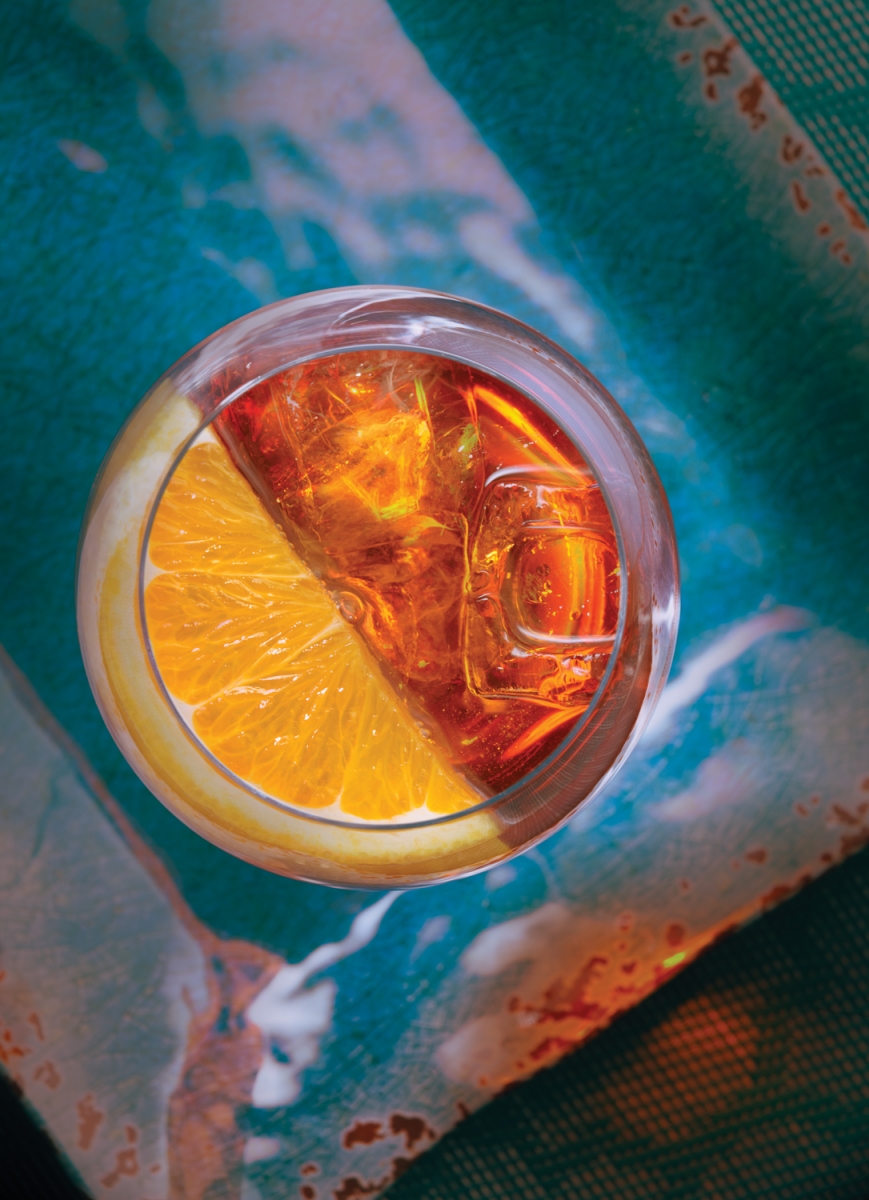Aperitivo culture and its flagship beverage, the Spritz, have long marked the transition between workdays and leisurely evenings in Italy. Aperitivo, literally “to open,” is the idea of whetting the appetite with a drink and taking the time to reflect on your day.
The word “spritz” comes from the German spritzen, meaning “to spray.” The origin of this term, as it relates to cocktails, can be traced to northeast Italy during the 19th century. During this period, the region was under the rule of the Austro-Hungarian Empire. The soldiers occupying the region, the story goes, found Italian wine much stronger than their customary Rieslings, and would order it with a spray of water to dilute it. Over the years, bitter ingredients were added to make the Spritz a truly Italian beverage.
The Spritz, in its simplest form, is a built cocktail (as in “built in the glass” rather that being stirred or shaken first) made up of three parts wine (still or sparkling), two parts bitter liqueur and a spritz of soda water. It strikes a balance between the dryness of the wine, the bitter sweetness of the liqueur and the effervescence of the soda water. A variety of garnishes serve to enhance the various characteristics of these drinks, from olives to citrus wheels.
Spritzes have existed, in some form, for nearly two centuries in Italy, with each city and region having its own variation. But, in the 1990s, one spritz would transcend all others in the public eye – the Aperol Spritz.
The result of a massively successful marketing push, the Aperol Spritz has become a global phenomenon. A simple combination of sparkling Prosecco, bittersweet Aperol, a touch of orange and soda water, the Aperol Spritz is refreshing, low-proof and, most importantly, approachable. From an afternoon on the beach to an early evening at the cafe table, the neon orange of an Aperol Spritz, set up in a stemmed wine glass and topped with a bright wheel of orange, is ever an inviting sight.
